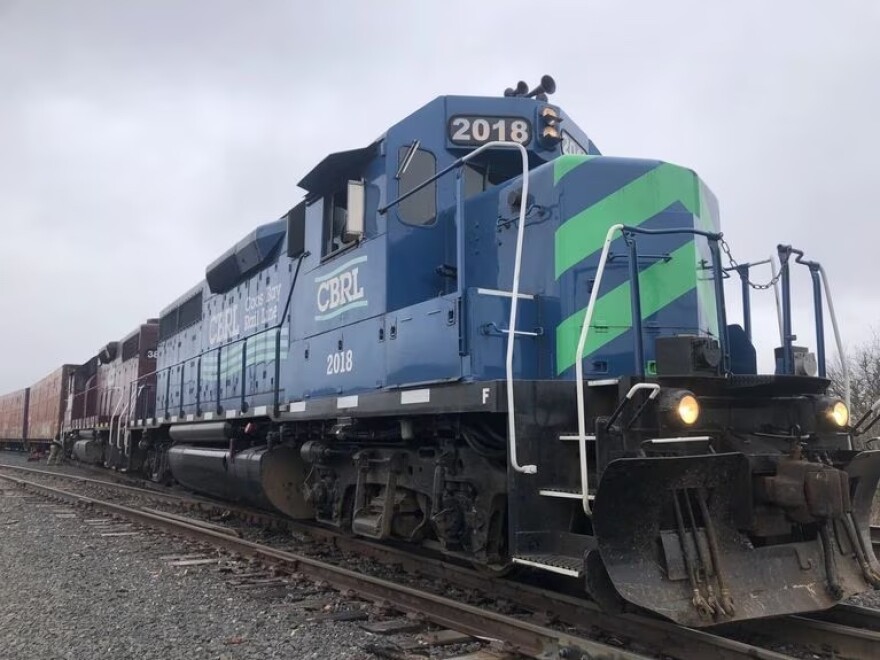The Coos Bay-North Bend area has roughly 32,000 residents and hundreds of acres zoned for industrial development. Through a public-private partnership between the port and NorthPoint Development, advocates of the port expansion aim to develop a $1.8 billion intermodal facility, capable of moving freight using multiple modes of transportation.
“Our primary role is to facilitate and encourage economic development here in the region and for the state,” said Margaret Barber, director of external affairs and business development for the Port of Coos Bay.
Barber said one asset the port controls is the Coos Bay rail line, which it’s hoping to upgrade if it can obtain $700 million from the U.S. Transportation Department’s Mega Grant program. While the Port of Coos Bay was not chosen as a Mega Grant recipient last year, Barber said advocates of a port expansion already have lined up $35 million from the state of Oregon, a BUILD grant, and a Port Infrastructure and Development program.
“We’ve got nine tunnels along our rail lines. So we’ll be making those taller essentially, or dropping it down one way or the other, so that it can accommodate double-stack traffic, because that’s primarily how containers are moved now,” Barber said. “So we’re looking at—when this is fully up and running—moving about 1.2 million containers through the Port of Coos Bay every year.”

The Coos Bay Rail Line runs 134 miles and links the port with the national rail network in Eugene.
Barber said that moving product by rail is more eco-friendly than by semi-truck, and, she said, results in 75% less greenhouse gas emissions. An improved rail system could be used for more than international goods shipped from overseas, she added.
“The idea would be that we can capture a lot of export traffic as well,” she said. “Whether it’s agricultural products from the Midwest, or Oregon even, and move stuff back that way.”
Upgraded rail and port facilities could help Coos Bay and North Bend rebound from several recent setbacks. In 2019, the Coos Bay Georgia Pacific Mill shut down, and last year the Shutter Creek Correctional Institution in North Bend closed. The combined loss of those 220 jobs has created more urgency for the plans to upgrade the port, and that’s sparked attention from some politicians.

“I would love to talk more about the Port of Coos Bay,” Val Hoyle, the Democratic representative for Oregon’s 4th Congressional District, said on a recent edition of KLCC’s “Oregon Rainmakers” podcast.
Holye, a member of the U.S. House Transportation and Infrastructure Committee, said the Port of Coos Bay is her top transportation priority, and she’s looking to have its channel dredged to a depth of 45 feet and a width of 450 feet to enable full-size container ships.
“With that, we will be able to reduce the supply chain congestion on the west by 10 to 12%,” said Hoyle. “And it will create both directly—and with ancillary services—about 9,000 jobs between Coos, Douglas, and Lane County.”
Among those also hoping for an improved facility is Lori Steele, executive director of the West Coast Seafood Processors Association. Steele told KLCC that this push is good news for processors and suppliers, at a time when the seafood industry is still recuperating from the COVID-19 pandemic and the loss of its Ukraine market.
“The Port of Coos Bay is really our largest international port and terminal,” said Steele. “And they are not only making efforts to make expansions and grow as an international shipping terminal, but they’re also making significant investments in the future of their fishing and seafood industry down there.”
There are undercurrents of dissent, however. The Biden administration and some environmentalists are eying the southern Oregon Coast for wind turbine developments. That’s caused concern for fishermen and other environmentalists.
Hoyle is hoping all these competing interests can be worked out.
“We feed the world out of the south coast,” she said. “And we want to make sure we allow people to fish, we allow whale migration to be not affected, and that we also move to a green energy source right there in the California current where there’s a lot of fish and there’s a lot of wind.”
Proponents of a port expansion say that if the rail line, navigation channel, and container terminal all come together, the Pacific Coast Intermodal Port will generate 3,500 construction jobs over a five-year period, and will lead to 12 trains a day running between the Coos Bay area and Eugene.
Copyright 2023 KLCC


